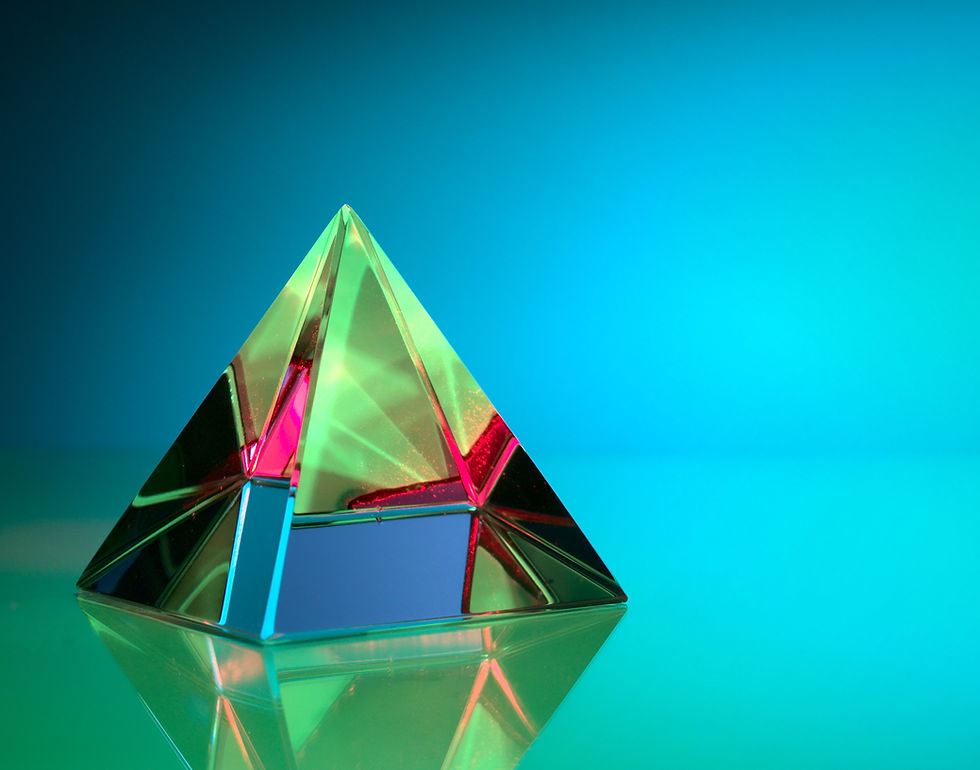The Psychology of Creativity and Imagination
- Nicole Luk
- Oct 15, 2023
- 3 min read
Creativity, defined by noted psychologist John R. Hayes, is “the potential of persons to produce creative works whether or not they have produced any work as yet.”, or ability to produce or develop original work, theories, techniques, or thoughts. Imagination is the faculty that produces ideas and images in the absence of direct sensory data, often by combining fragments of previous sensory experiences into new syntheses.
People often associate creativity and imagination with writing, theatre, or fine art. However, creativity and imagination play a role in virtually all vocations and hobbies, integral to the human experience. They fuel our ability to think beyond the constraints of what is known and come up with innovative ideas. But have you ever wondered how people think of ideas and imagine things? What makes the cognitive processes and factors that contribute to the generation of ideas worth exploring?
Imagination and Divergent Thinking: The Power of Mental Creation
Imagination is a fundamental cognitive process that allows us to mentally create and manipulate images, concepts, and possibilities. It is the driving force behind creative thinking and innovation. When we engage our imagination, we can combine existing knowledge and experiences in new and unique ways to generate novel ideas. Imagination is fueled by curiosity and a willingness to explore uncharted territories.
Divergent thinking is a cognitive process closely associated with creativity. It involves the generation of multiple ideas or solutions to a problem. Unlike convergent thinking, which focuses on finding the single correct answer, divergent thinking encourages the exploration of various possibilities and perspectives, allowing individuals to think beyond traditional boundaries and come up with innovative solutions.
The Factors Influencing Creativity and Imagination
There are many factors that can influence the potential of human creativity and imagination such as:
The environment: Factors such as freedom, autonomy, and a supportive atmosphere can encourage individuals to explore new ideas and take risks. Additionally, exposure to diverse perspectives, cultures, and experiences can broaden our thinking and inspire innovative approaches.
Level of Cognitive flexibility: The ability to switch between different modes of thinking, adapt to new situations, and approach problems from multiple angles. It involves being open to new ideas, embracing ambiguity, and challenging conventional thinking. Individuals with high cognitive flexibility are more likely to engage in creative problem-solving and generate innovative solutions.
Collaboration and feedback: This is essential for the development and refinement of ideas. Working with others allows for the exchange of diverse perspectives, brainstorming, and the pooling of resources and expertise. Constructive feedback from peers and mentors can provide valuable insights and help individuals refine their ideas, leading to more innovative outcomes.
Insights from Neurobiology
Recent technological advances have allowed us to understand the neural processes underlying creativity and imagination. There are many physiological components in our brains that contribute to the basis of this cognitive function, such as:
Prefrontal Cortex: Located at the front of the brain, it is crucial for creative thinking, problem-solving, decision-making, and working memory. It is active during creative tasks, supporting idea generation and flexible thinking.
Default Mode Network (DMN: This network activates during rest or internally focused thoughts. It is linked to creative thinking, imagination, making connections between ideas, retrieving memories, and envisioning future possibilities.
Hippocampus: The hippocampus, a region deep within the brain, is primarily associated with memory formation and retrieval .Research has linked the hippocampus to imagination and creative thinking, helping the integration of different memories and experiences to aid individuals to form novel associations and generate innovative ideas.
Neuroplasticity: The brain's ability to change and adapt. It allows for reorganising neural connections, forming new pathways, and strengthening existing ones. Neuroplasticity fosters the development of creative skills and innovative thinking.
Nurturing creativity not only enriches lives but also equips them with essential skills for the future. By fostering creativity, we empower people to become critical thinkers, imaginative problem solvers, and effective communicators. Let us embrace and celebrate the creative spirit in everyone, unlocking our full potential and paving the way for a brighter and more innovative future.
Watch THIS VIDEO to learn more!
Reference List:
American Psychological Association (n.d.). APA Dictionary of Psychology. [online] dictionary.apa.org. Available at: https://dictionary.apa.org/imagination.
American Psychological Association (2022). Creativity. [online] Apa.org. Available at: https://www.apa.org/topics/creativity#:~:text=Creativity%20is%20the%20ability%20to.
Asana (2021). Convergent vs. Divergent Thinking: Finding the Right Balance • Asana. [online] Asana. Available at: https://asana.com/resources/convergent-vs-divergent.
JWU (2023). The Brain Region Behind Creativity and Imagination | JWU CPS. [online] JWU College of Professional Studies. Available at: https://online.jwu.edu/blog/unlocking-power-mind-brain-region-behind-creativity-and-imagination/.
Lesley Univeristy (2020). The Psychology of Creativity | Lesley University. [online] Lesley.edu. Available at: https://lesley.edu/article/the-psychology-of-creativity.
Neuroscience News (2023). The Mind’s Tapestry: Weaving the Neurological Threads of Imagination. [online] Neuroscience News. Available at: https://neurosciencenews.com/imagination-neuroscience-23435/#:~:text=One%20study%20showed%20that%20higher [Accessed 13 Oct. 2023].
Theintactfront (2018). Factors Affecting Creativity. [online] theintactone. Available at: https://theintactone.com/2018/04/07/mtic-u4-topic-2-factors-affecting-creativity/.
.png)





Comments